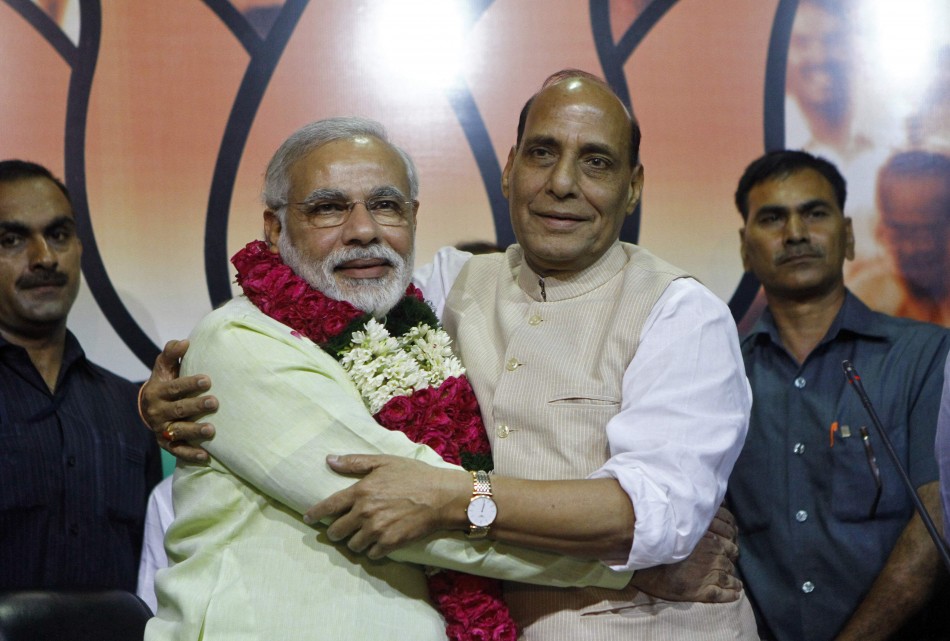New Delhi, Jun 30 : The conference had participants from other non-Hindi speaking states such as Manipur and Andhra Pradesh.
The NDA government’s insistence on promoting Hindi in official work drew a sharp reaction from a Meghalaya minister at a national conference organised by the Centre here on Thursday. Meghalaya’s Minister for Urban Affairs, Municipal Administration and Labour M Ampareen Lyngdoh’s suggestion that the Centre should factor in the “needs” of non-Hindi speaking states was met with applause from a section of the participants.
Lyngdoh flagged the issue at a day-long conference organised by the Union Labour Ministry and attended by ministers and officials from 20 states. While a few participants spoke in English, a majority of them, including Union Labour Minister Narendra Singh Tomar as well as ministers from Bihar, Chhattisgarh, Haryana, Uttarakhand and Madhya Pradesh, spoke in Hindi.
When it was her turn to speak, Lyngdoh said, “My Hindi is not very good but I am trying to learn the language… I would request the government to make some arrangements for those of us who do not speak Hindi.”
Talking to The Indian Express later, she said, “It is okay for people to speak in Hindi but we should converse in a language that is understood by all. The conference was a good platform to exchange ideas but we could not understand much of it and felt very odd. We could not even understand what the Union Minister said.” Saying that there should be an arrangement for headsets and interpreters at such events — on the lines of Parliament proceedings — she added, “English is the official language of Meghalaya but all of us still try to learn Hindi. We don’t want any language to be forced on us…”
The conference also had participants from other non-Hindi speaking states such as Manipur and Andhra Pradesh.
Officials insisted that the use of Hindi was not deliberate and ministers simply chose to speak in their preferred language. But given the PM’s focus on developing the country through “cooperative federalism”, officials said they are gearing up for similar interventions in upcoming deliberations with state governments.
The NDA government’s insistence on promoting Hindi in official work drew a sharp reaction from a Meghalaya minister at a national conference organised by the Centre here on Thursday. Meghalaya’s Minister for Urban Affairs, Municipal Administration and Labour M Ampareen Lyngdoh’s suggestion that the Centre should factor in the “needs” of non-Hindi speaking states was met with applause from a section of the participants.
Lyngdoh flagged the issue at a day-long conference organised by the Union Labour Ministry and attended by ministers and officials from 20 states. While a few participants spoke in English, a majority of them, including Union Labour Minister Narendra Singh Tomar as well as ministers from Bihar, Chhattisgarh, Haryana, Uttarakhand and Madhya Pradesh, spoke in Hindi.
When it was her turn to speak, Lyngdoh said, “My Hindi is not very good but I am trying to learn the language… I would request the government to make some arrangements for those of us who do not speak Hindi.”
Talking to The Indian Express later, she said, “It is okay for people to speak in Hindi but we should converse in a language that is understood by all. The conference was a good platform to exchange ideas but we could not understand much of it and felt very odd. We could not even understand what the Union Minister said.” Saying that there should be an arrangement for headsets and interpreters at such events — on the lines of Parliament proceedings — she added, “English is the official language of Meghalaya but all of us still try to learn Hindi. We don’t want any language to be forced on us…”
The conference also had participants from other non-Hindi speaking states such as Manipur and Andhra Pradesh.
Officials insisted that the use of Hindi was not deliberate and ministers simply chose to speak in their preferred language. But given the PM’s focus on developing the country through “cooperative federalism”, officials said they are gearing up for similar interventions in upcoming deliberations with state governments.


















